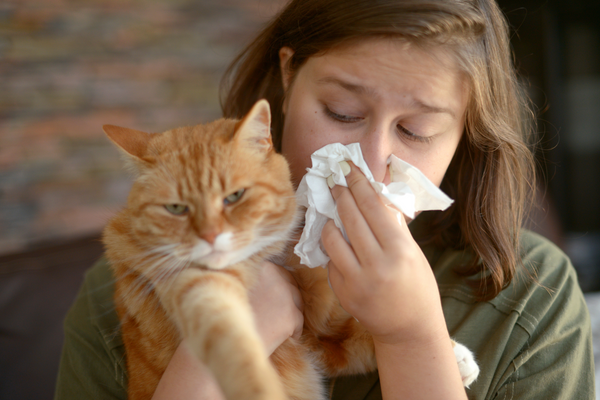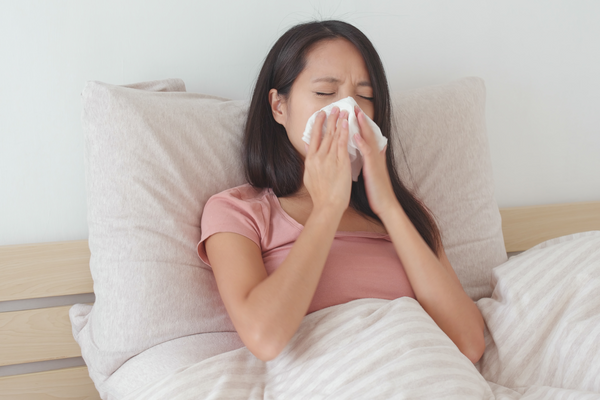Brace Yourself: These Are The Dirtiest Places In Your Home

Walk into any home, and some dirty spots are obvious; the overflowing laundry hamper in the bathroom, the greasy pizza stain on the living room carpet, or the soap scum buildup on the shower door. But what about the areas that don’t appear to be particularly grimy, but are the ones that can affect your family’s health?
Even the cleanest homes can be a haven for bacteria and germs. Let’s take a look around your home, room by room, at the not-so-obvious places where dirt and germs are lurking – and how to banish them for good.
Bathrooms
Did you know that some bacteria lingers in the bathroom after every use? And unfortunately, improper cleaning and handwashing can leave behind coliform bacteria like E. coli and viruses on surfaces. To ensure that the germ load in the bathroom stays low, pay particular attention to high-touch surfaces like doorknobs, light switches, faucet handles, the toilet, and bathtub or shower surfaces. Keep a bottle of Vital Oxide handy in the bathroom for easy daily cleaning and disinfecting.

Bathroom surfaces like sinks and countertops should be cleaned and disinfected daily, and toothbrush holders should be cleaned weekly. During your regular bathroom cleaning routine, take the time to wipe down often overlooked surfaces like the walls near the toilet.
Not-so-fun fact: Cross-contamination from the shared use of towels and bathmats can spread harmful bacteria and fungi like Staph and athlete's foot. Yikes! Bath towels, hand towels, washcloths, and bath mats should be washed at least once a week with an Anti-Allergen Laundry Detergent, along with ½ cup to 1 cup of Vital Oxide to sanitize the load. Ensure that the towels and bath mat are completely dry before putting them back in the bathroom. Otherwise, you’re extending an invitation to mold and mildew.
Bedrooms
Your serene sleep sanctuary may look clean and cozy on the surface, but the reality is that there could be fungus, bacteria, and millions of dust mites lurking. And many of these nasties can actually be hanging out right in your bed – after all, beds are used for sleeping, cuddling furry friends, eating, working, Netflix-watching, and everything in between.
If your mattress, sheets, bedding, and pillows aren’t cleaned regularly, they can harbor pathogens that cause:
- Allergies, asthma flare-ups, and breathing issues
- Skin irritation, acne breakouts, and eczema
- Fungal and bacterial infections
Prevent these undesirables by washing sheets and pillowcases weekly and deep cleaning mattresses twice yearly. Keep your mattress fresh in between deep cleanings by vacuuming once a month with a HEPA-type vacuum and neutralize allergens from dust mites and pet dander by spraying the mattress with an Anti-Allergen Solution. Make sure the bed is completely dry before putting your sheets back on. It’s also helpful to encase pillows and mattresses in removable, washable covers for easy cleaning.
P.S. Have you ever taken “clean” sheets out of the linen closet and noticed that they smelled stale? That’s because there’s body oil and still hanging out in the fabric fibers. Gross, right?
Ensure your bedsheets are correctly washed by using this method:
The Kitchen
The kitchen is the heart of most homes; it’s where we gather for meals, snacks, do homework, and sometimes simply hang out and catch up. It’s also the germiest space in most homes. NSF International, an independent public health and safety organization, conducted a “Germiest Places in the Home” study in 2011. Although most people thought the bathroom would be the germiest place in the house, it turned out the kitchen was actually worse when it came to the presence of bacteria, yeast, and mold. When you think about it, it makes sense. Kitchens are regularly exposed to elements like raw meat, unwashed produce, all kinds of liquid, and germs from everyone’s backpacks, school supplies, purses, toys, and germy items like pet bowls. Proper and frequent cleaning, sanitizing, and disinfecting are a must to keep harmful germs under control in the kitchen. Vital Oxide is NSF certified (no rinse required) food-contact surface sanitizer and kills 99.999% of bacteria, including E. coli, Salmonella, and Listeria, in less than 60 seconds.
Keys areas to focus on in the kitchen are:
- Sinks
- Countertops
- Drain openings and garbage disposals
- Cabinet handles
- Refrigerators
- Small Appliances
- Cutting boards
- Pet bowls
Living Areas
There is hidden dirt and germs wherever the family gathers, whether it’s the living room, playroom, movie room, or game room. Think about all of the shared items in your living space that get touched daily. Remote controls, game controllers, toys, keyboards, light switches, door handles, tablets, headphones, the list goes on and on. Does everyone in your household wash their hands before touching all of these things?
To keep the germ load down, clean and disinfect high-touch surfaces daily with Vital Oxide. If someone in your household has a cold or virus, shared items should be cleaned after every use.
NOTE: Never spray any kind of liquid directly onto electronics, electrical outlets, or light switches. Instead, spray Vital Oxide onto a clean microfiber cloth and wipe it onto the surface to remove dirt and oil. Follow up with another cloth lightly dampened with Vital Oxide, wipe to apply, and let air dry to disinfect. For other high-contact surfaces like tables, door handles, etc., remember to always pre-clean surfaces, and then apply Vital Oxide full-strength directly from the bottle by either spraying or wiping to disinfect.
Don’t forget to clean and sanitize upholstery, carpets, and rugs in the living areas. These soft surfaces are regularly exposed to sneezes and coughs, soil from feet and shoes, pet fur and dander, and unwashed hands (as well as feet and paws). Many types of bacteria and viruses can survive for several days on these types of soft surfaces. When it comes to cleaning, it’s important to note that soft surfaces (like carpets, sofas, and window treatments) cannot be disinfected, only sanitized. This is because the EPA only registers disinfectants for hard, non-porous surfaces. As porous surfaces, carpets and upholstery contain tiny holes that can collect dirt and germs. However, you can significantly reduce the germs hanging out in your soft surfaces through sanitization. Vital Oxide can be used to sanitize carpets and upholstery and is effective against a wide range of bacteria and viruses, including SARS-CoV-2, the coronavirus that causes COVID-19.
Vacuum soft surfaces at least once weekly with a HEPA-type vacuum to remove crumbs, pet hair, dirt, and dust. Don’t forget to clean underneath and between cushions where food and pet hair can linger. Then freshen, deodorize, and sanitize by spraying with Vital Oxide.
If someone in your home is ill, cover upholstered surfaces with a bedsheet or washable cover that can be changed and washed frequently to sanitize.
HVAC Systems
In our quest for comfort, most homes these days use a central heating and cooling system (HVAC), no matter the location. And, to keep the cost of using the system, we've made our homes more energy-efficient by sealing leaky doors and windows. While this is great for our wallets, it can be hazardous to our health, especially for those with respiratory illnesses.
HVAC systems do not pull in the fresh outdoor air; they simply filter and recycle indoor air, leaving any toxins inside. These can include cigarette smoke, radon gas, mold, chemicals, dust, pet hair, bacteria, volatile organic compounds (VOCs), and carbon monoxide. In many homes, indoor air can be more polluted than the air outdoors. For homes that use room air conditioners, they are often sources of mold and mildew spores unless the filters and vents are cleaned frequently. Properly cleaning and sanitizing your HVAC system and air conditioner filters is a must to improve the air quality inside your home. Vital Oxide is approved by the U.S. Environmental Protection Agency (EPA) to be applied in HVAC systems and air ducts to eliminate odor-causing bacteria, molds, mildew, and other fungi.
Have questions about cleaning, disinfecting, or reducing allergens? We have answers! The Ecology Works has been leading the way in green cleaning since 1993. We can help you select the products you need to live a better, allergen-free life. Please feel free to Contact Us or message us on Facebook. No question is too small! We're here to help.




